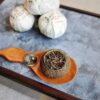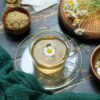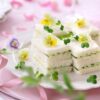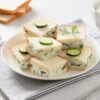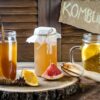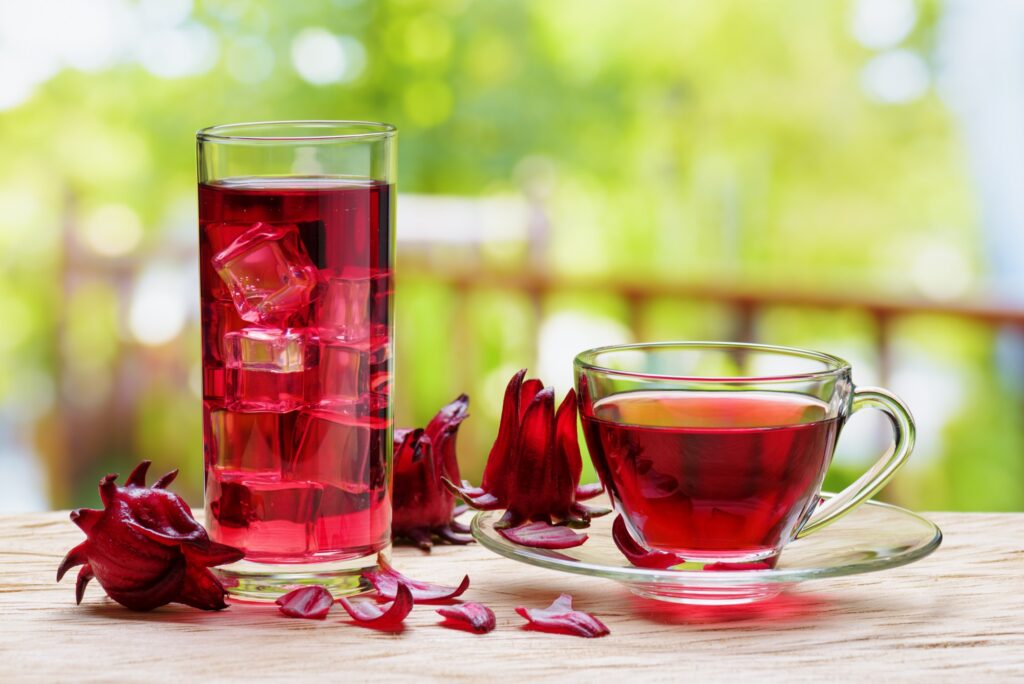
Hibiscus tea, derived from the vibrant petals of the Hibiscus sabdariffa plant, is a herbal infusion cherished worldwide for its tart flavor and vivid crimson color. This caffeine-free beverage has a rich history, rooted in ancient traditions across Africa, Asia, and the Caribbean, where it has been used both as a refreshing drink and a medicinal remedy. Known for its potential health benefits, hibiscus tea has captured the interest of health enthusiasts and scientists alike.
Not only is hibiscus tea celebrated for its unique taste, resembling that of cranberries, but it is also valued for its high content of antioxidants, including vitamin C and anthocyanins. These compounds are known to combat oxidative stress, which is linked to various chronic diseases. As more people gravitate towards natural and holistic approaches to health, hibiscus tea stands out as an appealing option.
In recent years, the popularity of hibiscus tea has surged, driven by growing awareness of its potential health benefits. With its ability to be served hot or cold, and its versatility in recipes, hibiscus tea fits seamlessly into a variety of lifestyle preferences. This guide aims to explore the myriad aspects of hibiscus tea, from its preparation to its health implications.
Hibiscus Tea Benefits
Hibiscus tea is renowned for its wide array of health benefits, making it a staple in many wellness routines. One of the most celebrated advantages of hibiscus tea is its potential to support cardiovascular health. Studies have suggested that the antioxidants present in hibiscus tea may help lower cholesterol levels, thus reducing the risk of heart disease.
Another significant benefit of hibiscus tea is its role in weight management. The polyphenols in hibiscus tea are believed to aid in metabolism and fat reduction, making it a popular choice for those seeking to maintain a healthy weight. Additionally, its diuretic properties can help eliminate excess fluids, contributing to a feeling of lightness and well-being.
Moreover, hibiscus tea is often praised for its potential to enhance liver health. The antioxidants in the tea are thought to protect the liver from toxins and promote its efficient functioning. By incorporating hibiscus tea into their daily routine, individuals may experience improved liver health, which is crucial for overall wellness.
How to Make Hibiscus Tea: A Step-by-Step Guide
Creating a perfect cup of hibiscus tea is a simple yet rewarding process that can be enjoyed by anyone. To start, gather the necessary ingredients: dried hibiscus petals, water, and optional sweeteners such as honey, sugar, or natural alternatives like stevia. The vibrant petals can be sourced from health food stores or online retailers.
Step-by-Step Guide
- Boil Water: Begin by bringing 2 cups of water to a rolling boil in a pot. The boiling process helps extract the full flavor and nutrients from the hibiscus petals.
- Add Hibiscus Petals: Once the water reaches a boil, remove it from the heat and add 1-2 tablespoons of dried hibiscus petals. For a stronger brew, increase the amount of petals.
- Steep the Tea: Allow the hibiscus petals to steep in the hot water for 10-15 minutes, depending on the desired strength of the tea. Longer steeping times result in a more robust flavor.
- Strain and Serve: Use a fine mesh strainer to remove the hibiscus petals from the liquid. Pour the tea into a cup and sweeten to taste. Enjoy it hot or over ice for a refreshing cold version.
- Experiment with Variations: Enhance the flavor profile by adding ingredients like ginger, mint, or citrus slices. These additions can elevate the taste and further boost the tea’s health benefits.
With this guide, anyone can master the art of making hibiscus tea, allowing them to enjoy its delightful taste and health-promoting properties at home.
Exploring Hibiscus Tea Side Effects
While hibiscus tea is celebrated for its health benefits, it is also important to be aware of potential side effects. One of the most notable concerns is its impact on blood pressure. Hibiscus tea is known for its hypotensive properties, which means it can lower blood pressure. Individuals with already low blood pressure or those on medication should consult a healthcare professional before consuming hibiscus tea regularly.
Additionally, hibiscus tea may interact with certain medications, including those for diabetes and hypertension. The tea’s ability to potentially lower blood glucose levels could interfere with diabetes management, necessitating professional guidance for those on medication.
Pregnant and breastfeeding women are advised to avoid hibiscus tea due to its potential effects on hormone levels and the possibility of inducing menstruation. Although more research is needed, it is prudent to exercise caution and seek medical advice before consumption during these sensitive periods.
The Connection Between Hibiscus Tea and Blood Pressure
The relationship between hibiscus tea and blood pressure is one of the most researched aspects of this herbal beverage. Studies have shown that hibiscus tea may help reduce both systolic and diastolic blood pressure, making it a natural option for those seeking to manage hypertension.
The mechanism behind hibiscus tea’s blood pressure-lowering effect involves its rich content of anthocyanins and other antioxidants, which are believed to improve arterial health and enhance blood flow. By relaxing the blood vessels, hibiscus tea may contribute to lower blood pressure levels.
Despite these promising findings, it is crucial for individuals with hypertension to consult their healthcare provider before incorporating hibiscus tea into their treatment plan. While hibiscus tea can be a valuable complementary approach, it should not replace prescribed medication or medical advice.
Delicious Hibiscus Tea Recipes to Try
Hibiscus tea’s versatility extends beyond a simple brew. It can be transformed into a variety of delightful recipes that cater to different taste preferences and occasions. Here are some creative ways to enjoy hibiscus tea:
Hibiscus Iced Tea
- Ingredients: 4 cups of water, 1/2 cup of dried hibiscus petals, 1/4 cup of sugar or honey, fresh mint leaves, lemon slices
- Instructions:
- Boil water and steep hibiscus petals for 10 minutes.
- Strain and stir in sugar or honey until dissolved.
- Let it cool, then refrigerate.
- Serve over ice with mint leaves and lemon slices for garnish.
Hibiscus Tea Lemonade
- Ingredients: 2 cups of hibiscus tea, 1 cup of fresh lemon juice, 1/2 cup of sugar, 3 cups of cold water
- Instructions:
- Mix brewed hibiscus tea with lemon juice and sugar.
- Stir in cold water and chill.
- Serve over ice for a refreshing summer drink.
Hibiscus Tea Smoothie
- Ingredients: 1 cup of chilled hibiscus tea, 1 banana, 1/2 cup of frozen berries, 1/2 cup of yogurt, honey to taste
- Instructions:
- Blend all ingredients until smooth.
- Adjust sweetness with honey.
- Serve immediately for a nutritious breakfast or snack.
These recipes illustrate the culinary potential of hibiscus tea, providing delicious and healthful options for any occasion.
Frequently Asked Questions
1. Can hibiscus tea help with weight loss?
While hibiscus tea alone is not a weight-loss miracle, its diuretic properties and ability to boost metabolism can support a healthy weight management plan when combined with a balanced diet and regular exercise.
2. How much hibiscus tea should one drink daily?
Moderation is key. Consuming 1-2 cups a day is generally considered safe for most people. However, individuals with specific health concerns should consult a healthcare provider for personalized advice.
3. Is hibiscus tea safe for children?
Hibiscus tea is generally safe for children in moderate amounts. Parents should ensure the tea is unsweetened or lightly sweetened and consult a pediatrician if the child has any health conditions.
Embracing Hibiscus Tea for Wellness
Incorporating hibiscus tea into daily life offers a flavorful and healthful experience that can enhance overall wellness. From its potential cardiovascular benefits to its role in supporting liver health, hibiscus tea is a versatile addition to a healthy lifestyle. With its vibrant hue and refreshing taste, it appeals to both the senses and the body.
As with any health regimen, it is essential to approach hibiscus tea with an understanding of its effects and potential interactions. By consulting healthcare professionals and experimenting with different recipes, individuals can enjoy the numerous benefits of this herbal wonder safely and effectively.

